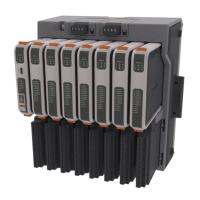Site Considerations for Equipment Installation, Grounding, and Wiring Manual
D301452X012
October 2019
8 Grounding and Isolation
3.3.1 Establishing a Good Earth Ground
A common misconception of a ground is that it consists of nothing more than a metal pipe driven
into the soil. While such a ground may function for some applications, it is not suitable for a
complex system of sophisticated electronic equipment. Conditions such as soil type, composition,
and moisture all have a bearing on ground reliability.
A basic ground consists of a 3/4-inch diameter rod with a minimum length of 8 feet driven into
conductive earth to a depth of about 7-feet as shown in Figure 3-1. Use braided copper wire for the
ground wire. The end of the wire should be clean, free of any coating, and fastened to the rod with
a clamp. Cover or coat this ground connection to protect it from the weather and the environment.
Figure 3-1: Basic Ground Rod Installation
3.3.1.1 Soil Conditions
Before installing a ground rod, analyze the soil type and moisture content. Ideally, the soil should
be moist and moderately packed throughout to the depth of the ground rod. However, some soils
may exhibit less-than-ideal conditions and may require extra attention.
With respect to establishing and maintaining a good earth ground, soil types fall into either of two
general categories: “good” soil and “poor” soil.
To be a good conductor, soil must contain some moisture and free ions (from salts in the soil). In
rainy areas, the salts may be washed out of the soil. In sandy or arid areas the soil may be too dry
and/or salt-free to a good conductor. If salt is lacking, add rock salt (NaCl); if the soil is dry, add
calcium chloride (CaCl2).

